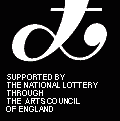It is a rule with a number of notable exceptions: Haiku do not use metaphors and similes. One could quote a handful of haiku that have a metaphor or simile, to challenge the rule. Nevertheless it is true that, compared to the poetic tradition that we in the British Isles have inherited, replete with brilliant comparisons, as if the whole value of poetry lay in metaphorical ingenuity, the haiku tradition eschews the way of stunning similarities unusually combined.
There are a number of reasons for this. In the period when Basho was young, haiku and renga (see History) were full of verbal wit, linguistic sensationalism and self-conscious stylishness; the revolution Basho effected was to turn the attention of poets from the cleverness of their own command of language to the high seriousness of the subject-matter for poetry. There is a parallel with Zen religious teachings on the illusory nature of the Self. In Zen, cleverness, achievements, - even good works and generous charitable contributions - count for nothing in the Enlightenment stakes. The main task is to perceive the nature of reality, quite independent of contaminating notions about "I," especially pride in my good works, my virtue, or my achievements. Likewise, the main task of a poem, according to Basho, is to represent reality without contamination by the ego of the poet. Showing off, lacing the poetry with stunningly original metaphors, and foregrounding the craft of the writer in any way are all forms of interference with the experience of reader, who is to be put directly in touch with reality.
Another way in which the art of haiku is quite different from the poetry of the West is in its attitude to description. A great part of the skill of a Western poet is measured by how vividly, exactly and completely the poet can recreate an experience - by how full and accurate a description is. A haiku poet, however, refers, rather than describes. A simple naming will do, if it brings to mind the reader's memory of an experience. The poem
Autumn sunset glow
on the playground
where no one plays
(Koji, trans. Chiyoko/Marsh)
would not be improved by a vibrant phrase evoking the colour of the sunset. The first line is absolutely without originality - it just refers to something we all recognise - and the poem's clarity is a function of the ordinariness of this phrase. The subtle combination of sadness, joy, and the suggestion of an acceptance of death in this poem would be ruined if the sunset were portrayed with distracting brilliance. The poet has to learn to be modest and self-effacing, which allows the subject itself to fill the reader's mind.
Haiku do not make much use of the extraordinary simile and, on the whole, a plain style is preferred so that the focus of the poem is on the thing-in-itself. But while haiku do not use metaphor, they may often be metaphor. Haiku give us little images. When a haiku gives us just a noticing, however - the kind of observation that is interesting to a naturalist, for example, and might just as appropriately be published in the prose of a book listing the habits of birds - then it may have charm and a passing interest but it is in danger of becoming one of the dreaded "So What?" haiku.
I switched off the light
over the kitchen sink, and
the frogs stopped croaking
(James Kirkup)
Yes, quite amusing, and no doubt true, but so what? Does this observation exemplify something universal in the relationship between the animal world and human culture? A poem of this kind might do - in which case it would take on great metaphorical resonance - but this one leaves one with a sense of bafflement. Whereas the same poet's
Waterfall roaring -
though the sparrow sings unheard,
still he keeps singing
(James Kirkup)
is an observation that captures something important about the spirit of sparrows, and, by extension, all creatures, especially poets! It is a small variation on the theme of Hardy's The Darkling Thrush and Isaac Bashevis Singer's Cockadoodledo. It addresses the true subject of poetry: the indomitable life-force, its energy and abundance. When the observation of a sparrow does that, it is not that the sparrow ceases to be the real subject of the poem. It is not replaced by metaphor. It would not be true to say that the poem is really about the spirit of a poet rather than about a sparrow. Unquestionably, the sparrow is the subject, and the primary, concrete meaning of the poem. But because the observation of the sparrow has, in this instance, caught something universal, with a parallel in the human realm, the poem is more than a "So What?" recorded fact. It takes on symbolic power and is invested by the reader with a wider significance (see also the last paragraphs of the entry on Zen Buddhism and haiku).
The best haiku have metaphorical power, because the concrete observation which is the subject has wider resonance. In this sense the haiku poet is like a great photographer: the art is in the selection. One could photograph everything and anything, but only those images that catch a universal significance, that show some balance of forces, are worth publishing.
George Marsh

